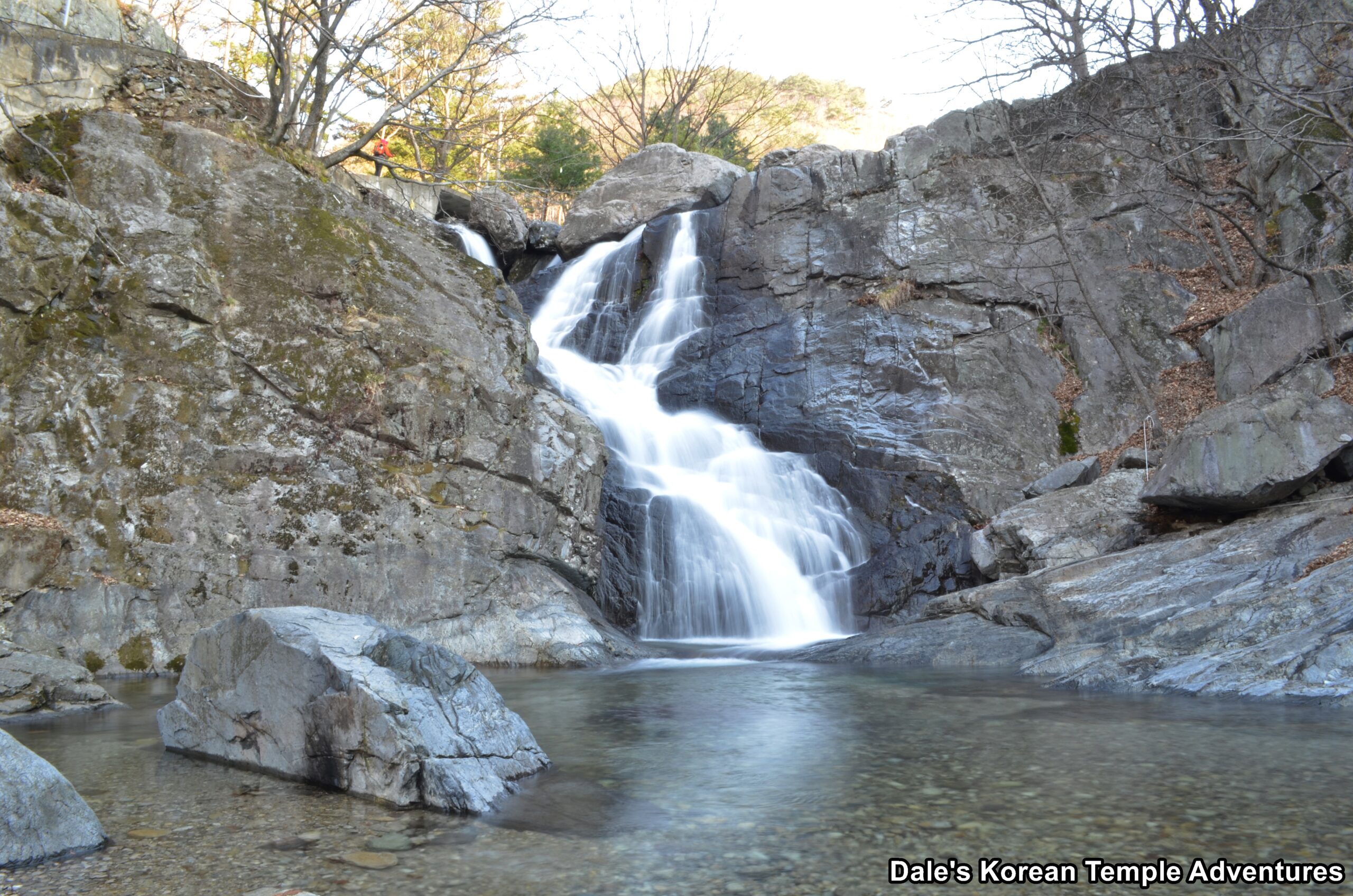
Temple History
Seokgolsa Temple is located in a long valley west of Mt. Unmunsan (1,188 m) in northeastern Miryang, Gyeongsangnam-do. It’s believed that Seokgolsa Temple was first founded by the monk Beheo-seonsa in 560 A.D. It was later re-established in 773 A.D. by the monk Beopjo. Throughout the years, Seokgolsa Temple has gone by a few different names including Nojeonsa Temple, Seokdongsa Temple, and Seokgulsa Temple. In fact, it’s believed that the temple was originally called Seokgulsa Temple, or “Stone Cave Temple” in English; however, because of the local dialect, and the way that this was pronounced, it changed to Seokgolsa Temple over time.
Seokgolsa Temple was also a base for the Righteous Army that actively defended the nation against the Japanese during the Imjin War (1592-1598). The temple would be rebuilt and expanded in 1753 by the monk Hamhwa. Tragically, the temple was completely destroyed in 1950 during the Korean War (1950-1953). The temple would be restored and rebuilt starting in the 1980’s. The Samseong-gak Hall was built in 1989, the Geukrak-jeon Hall was rebuilt in 1999, and the monks’ dorms were completed in 2003.
Temple Myth
There’s a myth about Seokgolsa Temple about the head monk and his student. This student was the first in line to succeed the head monk after his passing. And because this novice monk had a noble personality that allowed him to better understand the virtues of the Buddha’s teachings, the head monk grew jealous of the novice monk. So the head monk turned the novice monk into a Gangcheoli – 강철이, which means “poisonous dragon” in English.
Wherever the Gangcheoli passed, all of the crops would wither and die. The novice monk/Gangcheoli was sad, but he still continued to study the Buddha’s teachings. After a year of being a Gangcheoli, the novice monk asked Okhwang-sangje – 옥황상제 (The Great Jade Emperor) to allow him to enter heaven, but the Great Jade Emperor denied the monk’s request. Furious, the Gangcheoli/novice monk aggressively moved throughout the air with its body causing thunder and hail. This killed all the crops on the ground, once more. And now, every year, when the barley is about to be harvested, the Gangcheoli destroys all the crops. Not the happiest of endings.
Temple Layout
You first make your way up a long valley next to the Wonseo-cheon Stream, until you eventually arrive at the cascading Seokgol-pokpo Waterfall. The waterfall slides to the side and collects in a stony pool of water at its base. The waterfall is especially beautiful just after a good rainfall, and you’re able to get close to the base of the falls in the gorge below.
Continuing on past this beautiful waterfall, you’ll pass over a stone bridge, and climb a stone set of stairs, to gain entry to the compact temple courtyard. Straight ahead of you is the newly built Geukrak-jeon Hall. And out in front of it are two book-ending seokdeung (stone lanterns). Surrounding the exterior walls are a collection of Palsang-do (The Eight Scenes from the Buddha’s Life). Stepping inside the main hall, you’ll find a main altar triad centred by Amita-bul (The Buddha of the Western Paradise). This central image is joined on either side by Gwanseeum-bosal (The Bodhisattva of Compassion) and Daesaeji-bosal (The Bodhisattva of Wisdom and Power for Amita-bul). To the right of the main altar is a shrine dedicated to a black haired image of Jijang-bosal (The Bodhisattva of the Afterlife). And to the left of the main altar is a beautiful Shinjung Taenghwa (Guardian Mural).
To the right of the Geukrak-jeon Hall are the monks’ dorms, and to the left of the main hall is the Samseong-gak Hall, which actually identifies itself with two signboards above the dual entryways as a Sanshin-gak Hall and a Chilseong-gak Hall. However, stepping inside this shaman shrine hall, you’ll in fact notice three murals hanging on the main altar. Rather oddly, the largest image of the three is dedicated to Chilseong (The Seven Stars), which hangs to the far right. This larger image is joined to the left by two smaller images dedicated to Dokseong (The Lonely Saint) and Sanshin (The Mountain Spirit).
How To Get There
To get to Seokgolsa Temple, you’ll first need to get to the Miryang Intercity Bus Terminal. From the Miryang Intercity Bus Terminal, you’ll need to catch the “Eoleum-gol – 얼음골” bus. The bus ride will last 29 stops, or 34 minutes. You’ll then need to get off at the “Wonseo – 원서” stop. From where the bus drops you off, you’ll then need to head north and cross over the “Miryangdae-ro -밀양대로” road. After crossing this road, hike up the valley that houses Seokgolsa Temple for 1.6 km, or 30 minutes.
Or you can simply take a taxi from the Miryang Intercity Bus Terminal. The taxi ride will take 25 minutes, over 27 km, and it’ll cost you 35,000 won (one way).
Overall Rating: 7/10
The rather obvious highlight to Seokgolsa Temple is the beautiful Seokgol-pokpo Waterfall at the entry of the temple grounds. It’s a beautiful, tall waterfall that you can get very close to for some amazing pictures. In addition to all of the natural beauty at Seokgolsa Temple, which also includes the towering Mt. Unmusan off in the distance, is the newer artwork in and around the temple shrine halls. While a bit more difficult to get to, it’s definitely worth a visit to the countryside in Miryang.
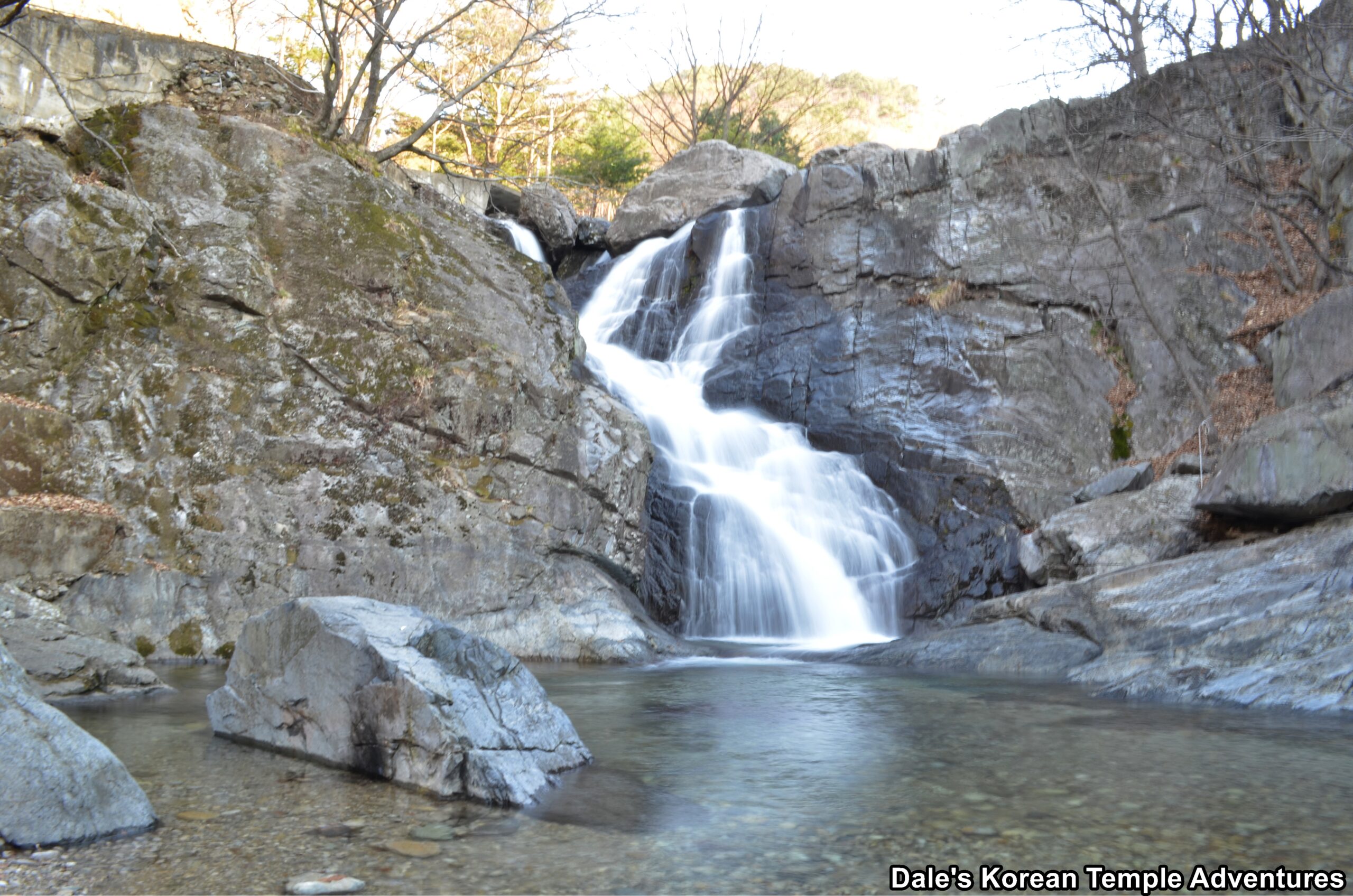
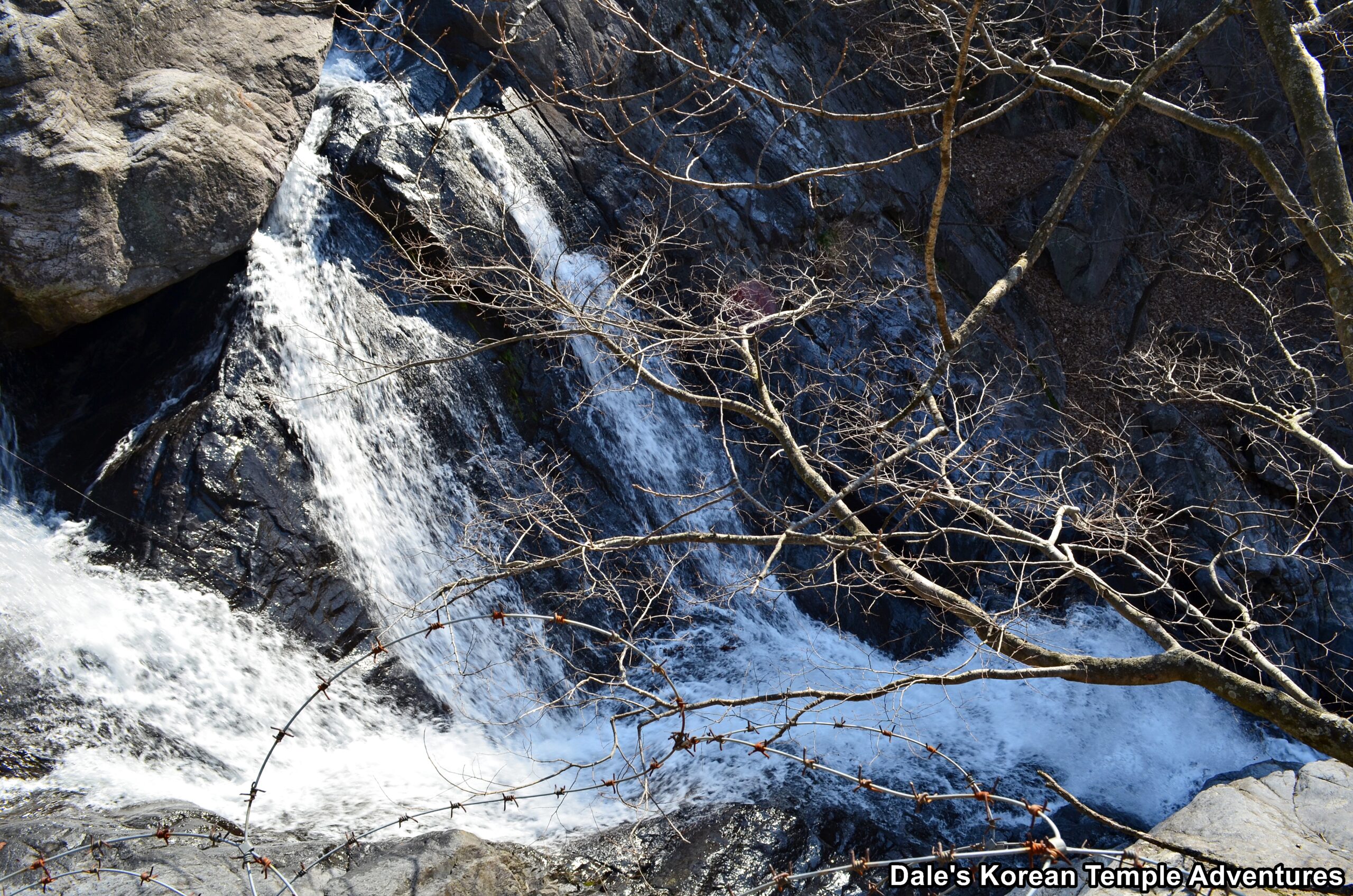
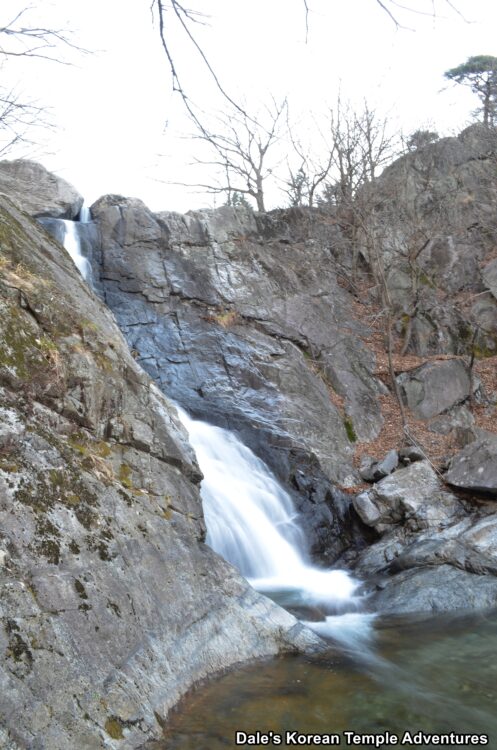

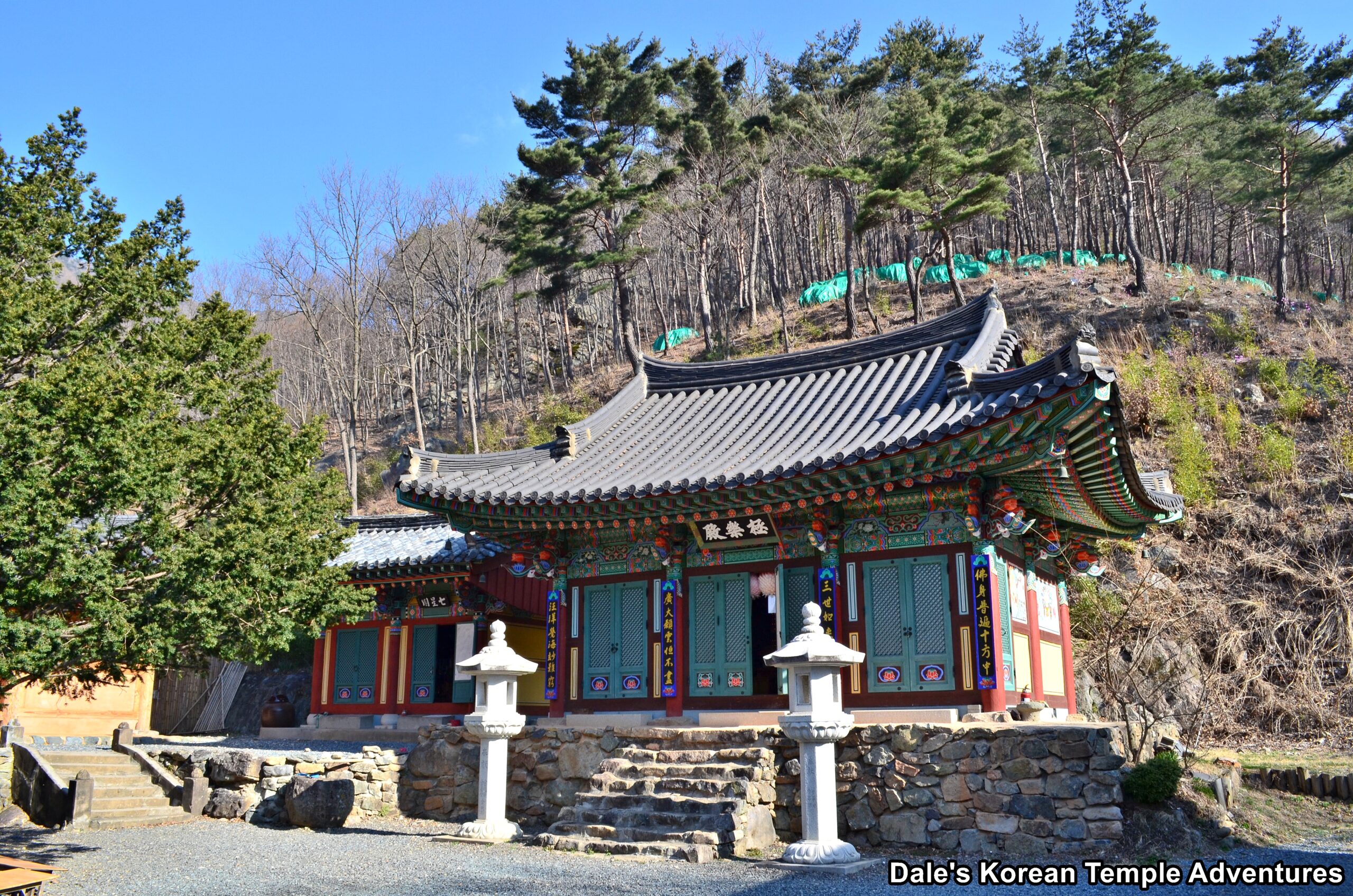
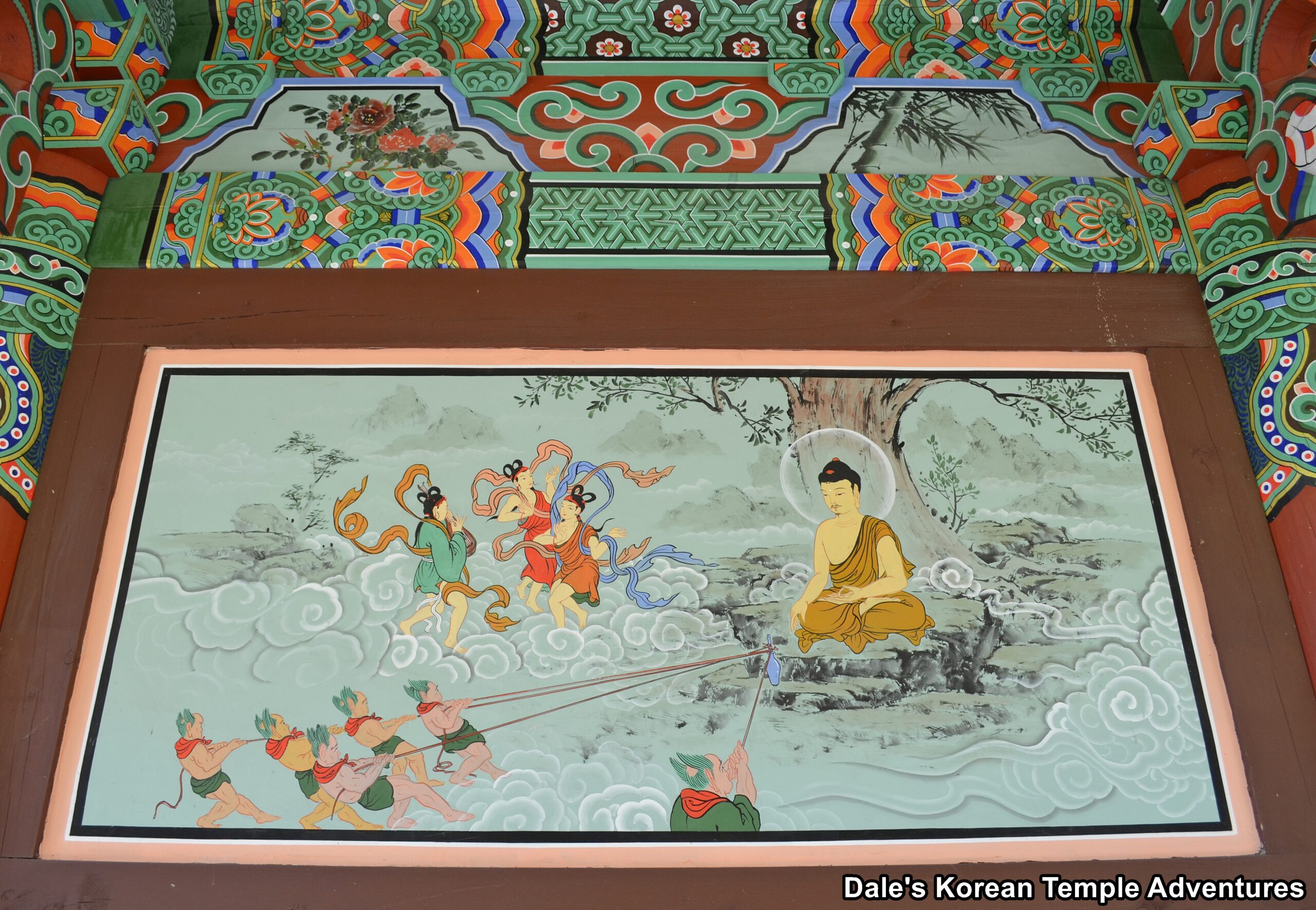
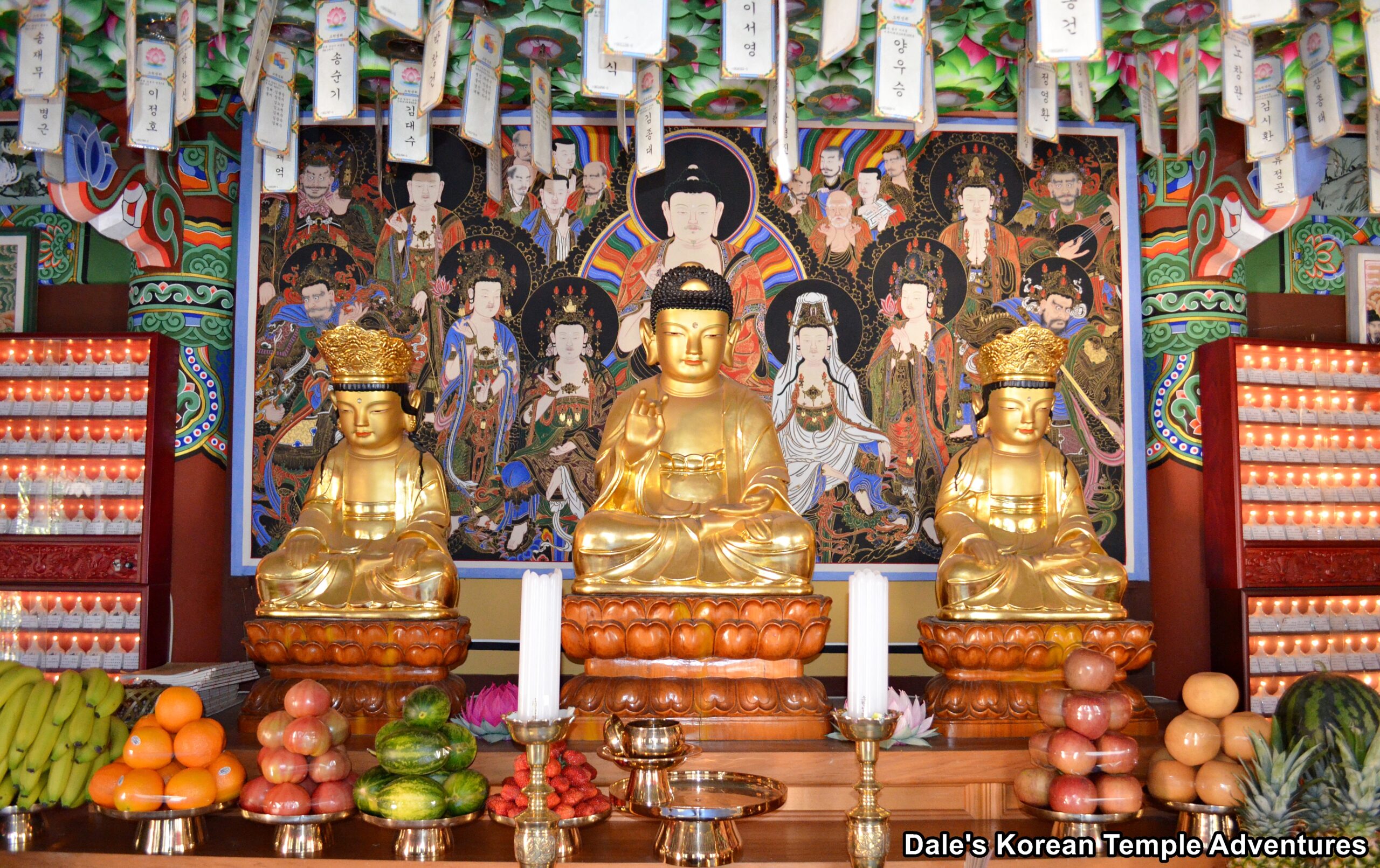
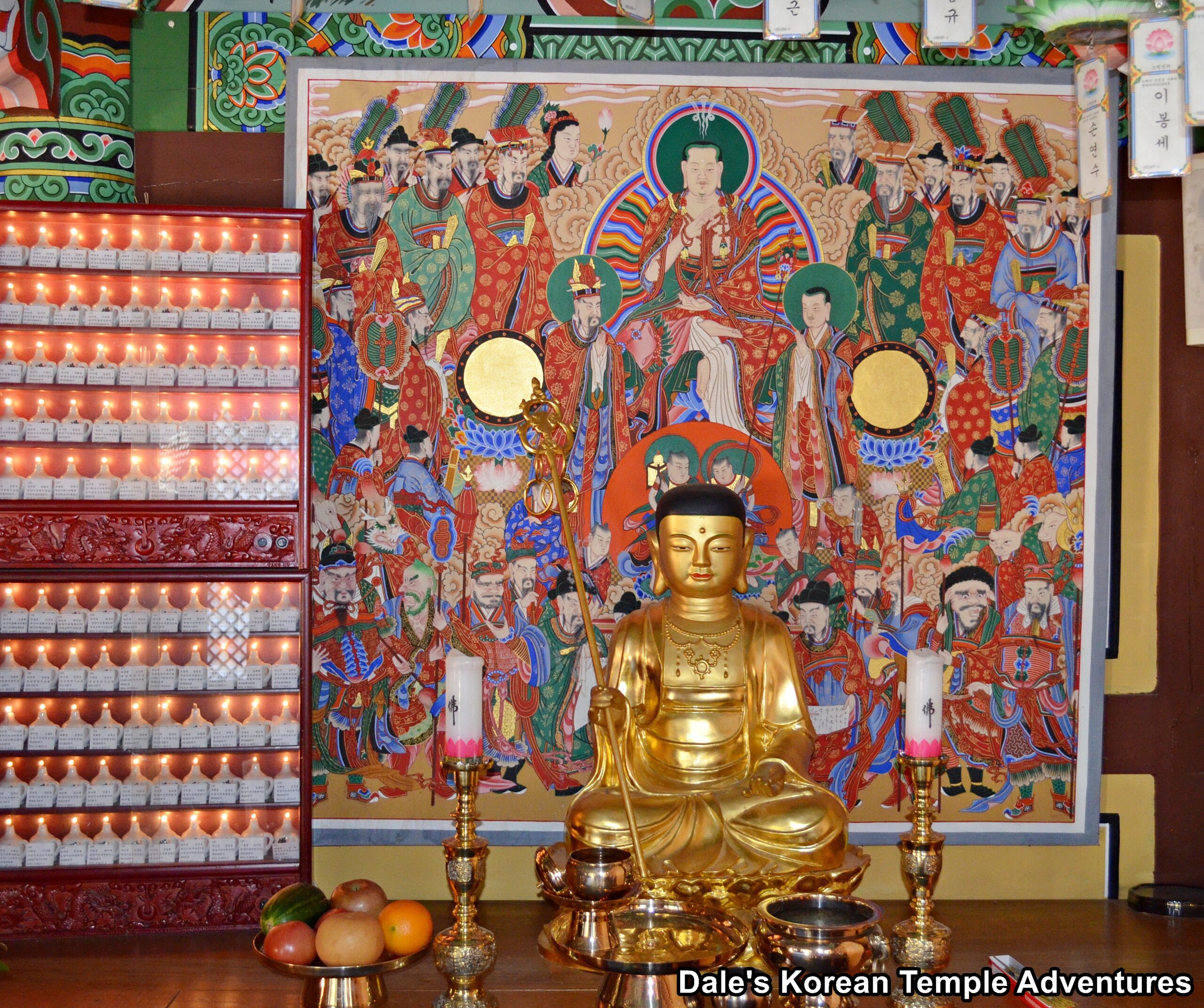
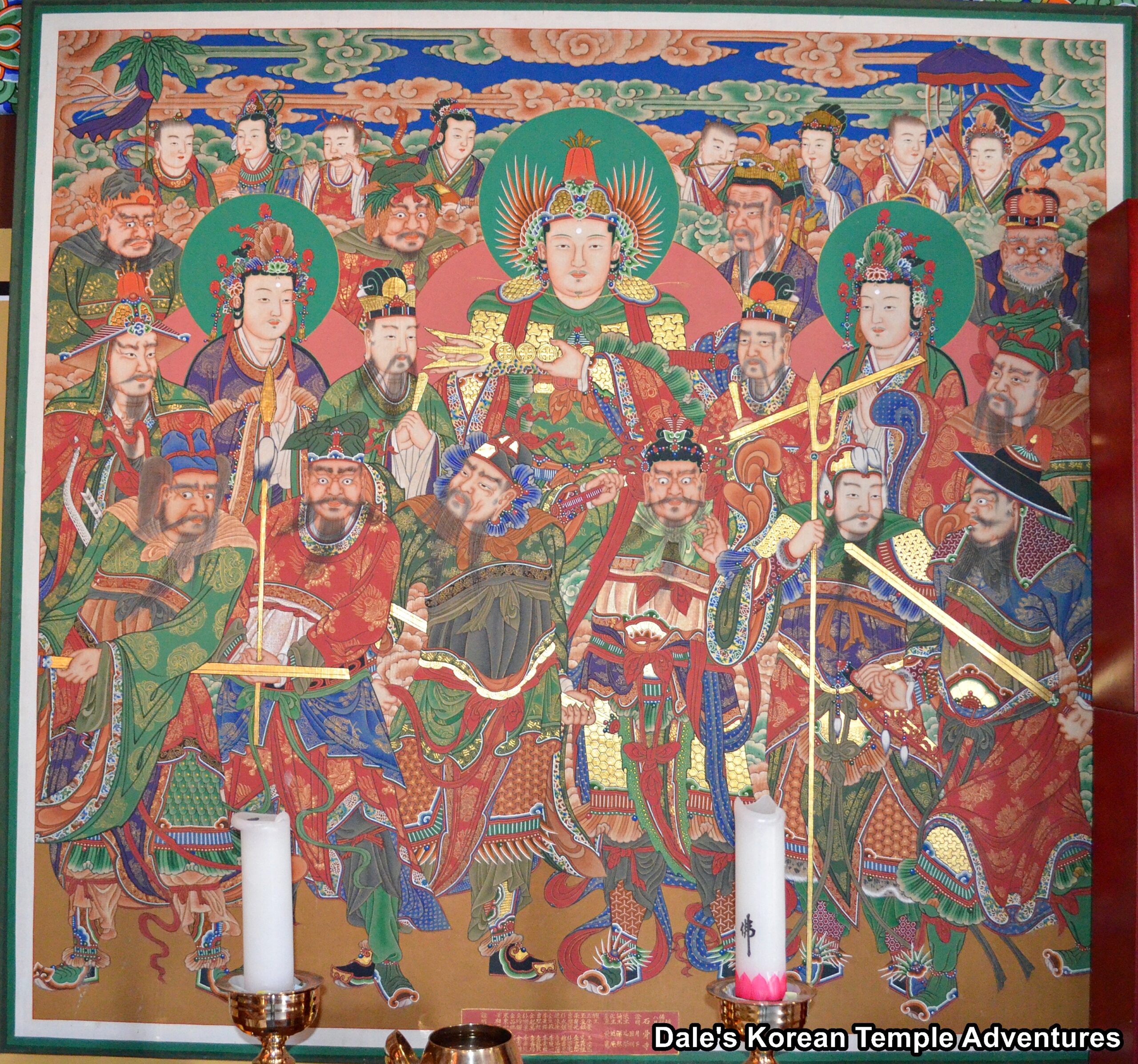
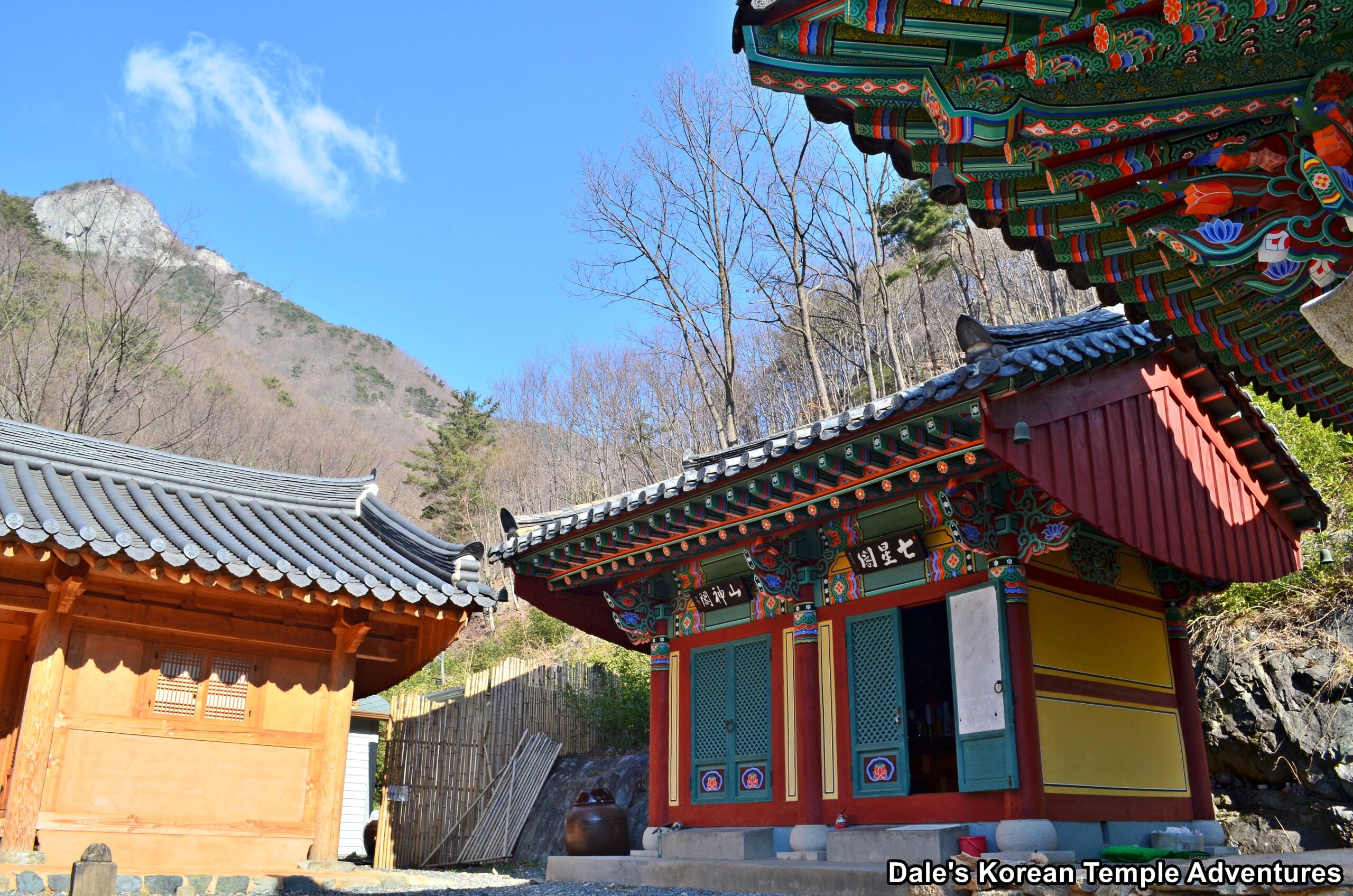

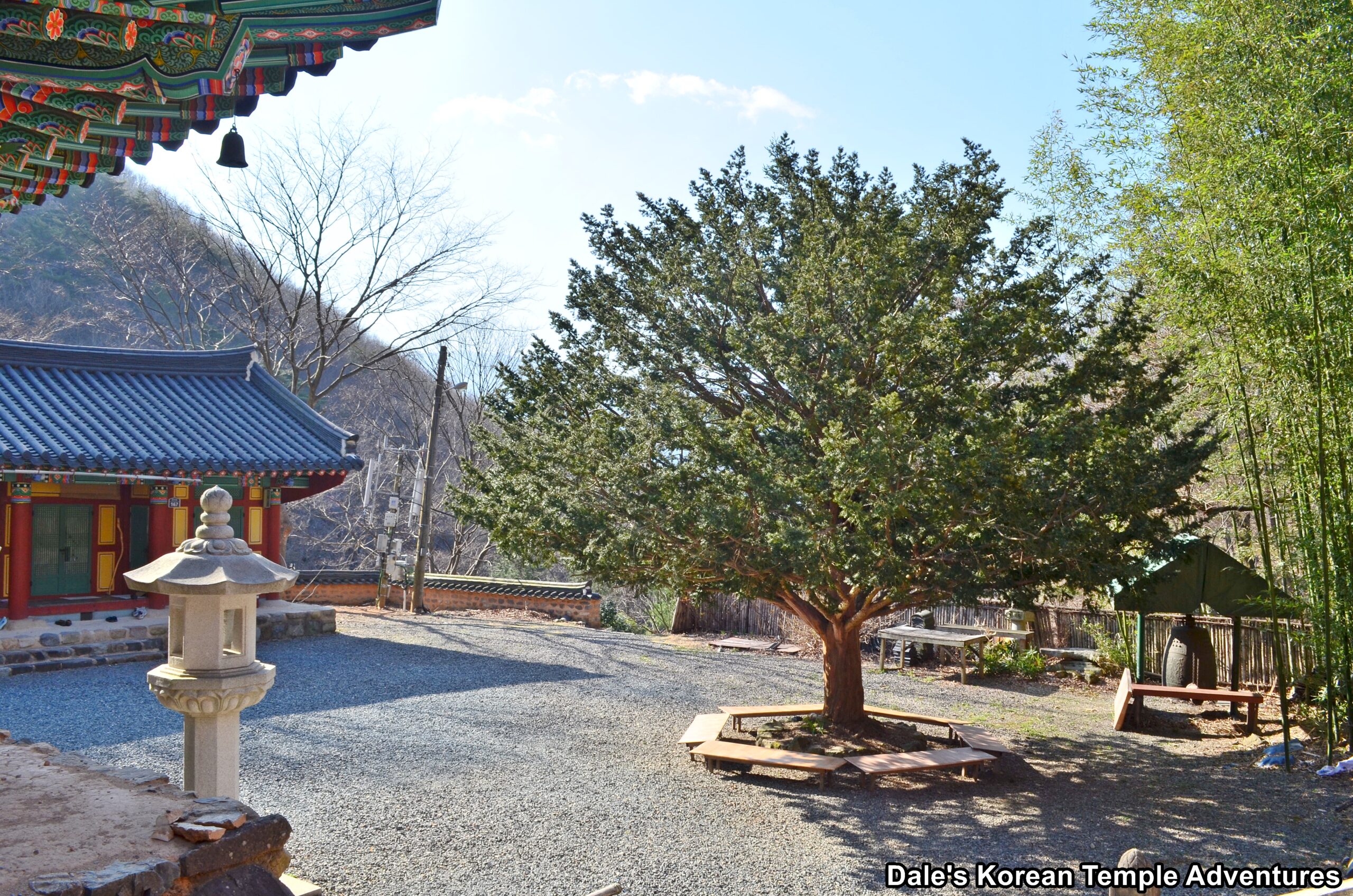
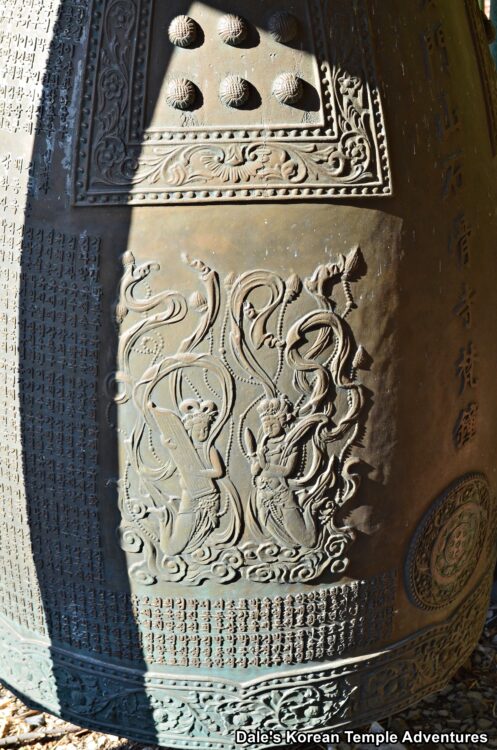


Recent comments